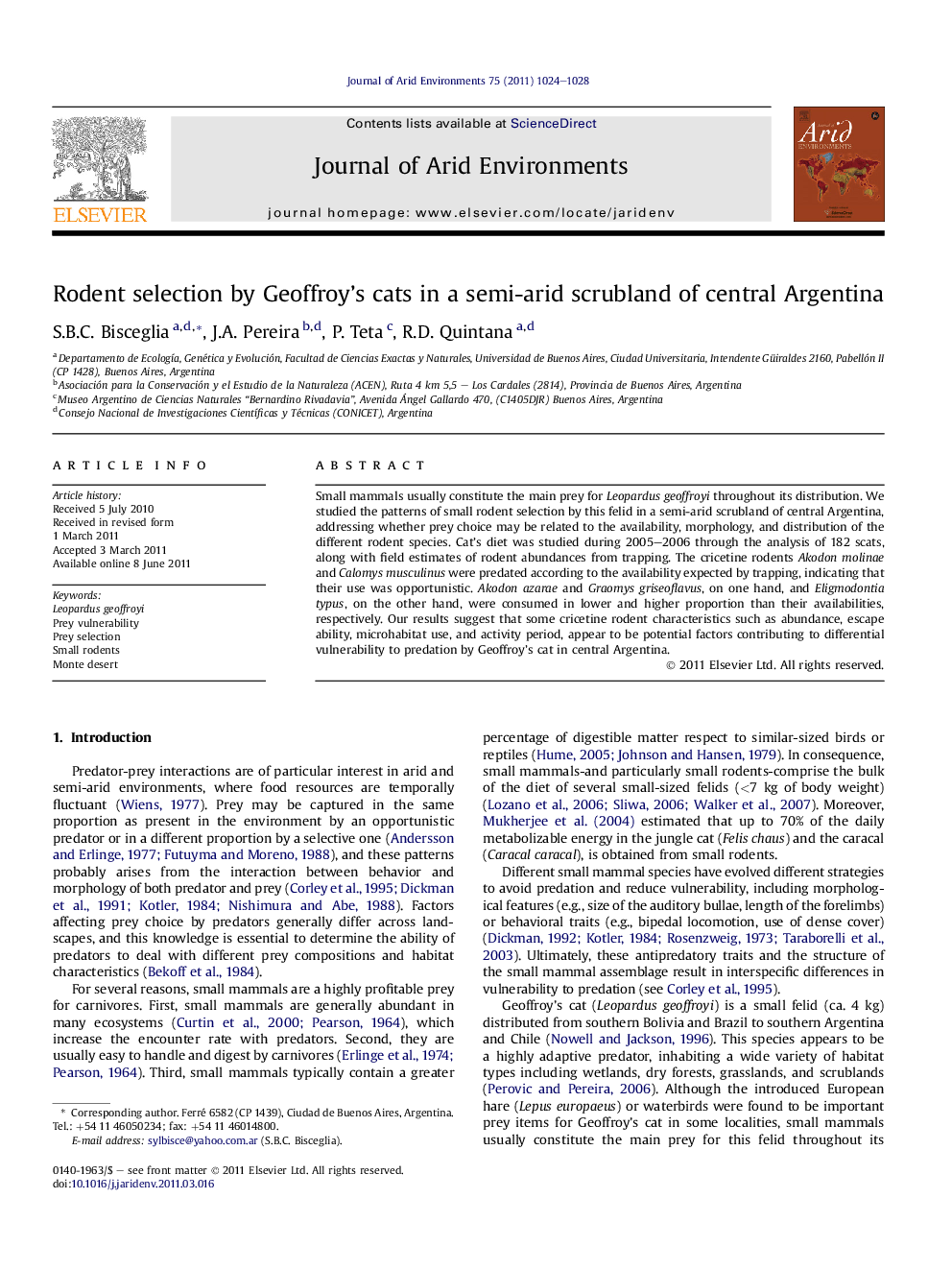| Article ID | Journal | Published Year | Pages | File Type |
|---|---|---|---|---|
| 4393562 | Journal of Arid Environments | 2011 | 5 Pages |
Small mammals usually constitute the main prey for Leopardus geoffroyi throughout its distribution. We studied the patterns of small rodent selection by this felid in a semi-arid scrubland of central Argentina, addressing whether prey choice may be related to the availability, morphology, and distribution of the different rodent species. Cat’s diet was studied during 2005–2006 through the analysis of 182 scats, along with field estimates of rodent abundances from trapping. The cricetine rodents Akodon molinae and Calomys musculinus were predated according to the availability expected by trapping, indicating that their use was opportunistic. Akodon azarae and Graomys griseoflavus, on one hand, and Eligmodontia typus, on the other hand, were consumed in lower and higher proportion than their availabilities, respectively. Our results suggest that some cricetine rodent characteristics such as abundance, escape ability, microhabitat use, and activity period, appear to be potential factors contributing to differential vulnerability to predation by Geoffroy’s cat in central Argentina.
► The most abundant cricetines were the most consumed by Geoffroy’s cats. ► Akodon molinae and Calomys musculinus were predated according to the availability. ► Akodon azarae and Graomys griseoflavus were consumed in lower proportion than their availability. ► Eligmodontia typus, was consumed in higher proportion than their availabilities. ► A poor escape response enhance profitability of rodents as prey for Geoffroy’s cats.
